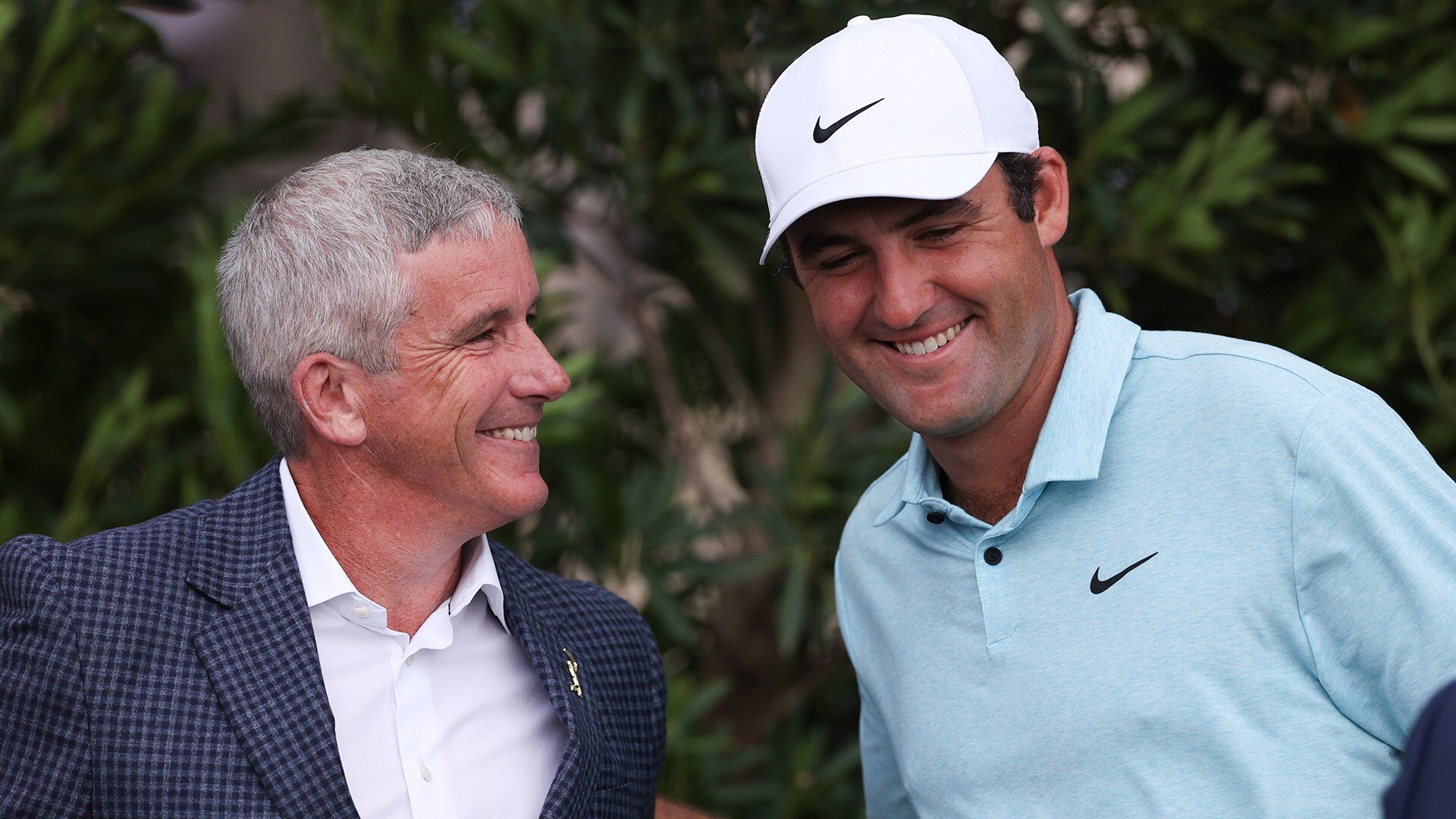Jay Monahan confident designated events will draw top players moving forward

CHARLOTTE, N.C. – The central tenet of the PGA Tour’s reimagined schedule is the top players going head-to-head more often, and the 2023 experiment that will become the standard going forward has checked almost every box.
From the Plantation Course to Pacific Palisades, the designated offerings have delivered compelling finishes and must-watch fields, and if the Tour is able to nip/tuck next year’s schedule into a better “cadence” the product should only be better.
Full-field scores from the Wells Fargo Championship
“What’s happening this year and having spent time walking around a number of top players, they’re responding to it,” Tour commissioner Jay Monahan said Wednesday at the Wells Fargo Championship, the season’s ninth designated event.
The list of designated winners includes world No. 1 Jon Rahm and world No. 2 Scottie Scheffler, along with an intoxicating mix of challengers from deeper in the world ranking. What was born in a board room last year in Delaware has now aged well beyond the “proof of concept” phase, but there are cracks in the logic.
This season the Tour gave top players as defined by last year’s Player Impact Program a single “opt-out,” but they were otherwise required to play all the designated events to receive their full PIP payout, but even a $3 million penalty wasn’t enough to guarantee full participation from Rory McIlroy.
McIlroy skipped last month’s RBC Heritage to refresh and recharge following a disappointing missed cut at the Masters. Since the Northern Irishman had already skipped the year’s first designated event, the Sentry Tournament of Champions, his decision to bypass the Tour stop on Hilton Head Island, S.C., likely cost him $3 million, which is 25 percent of his PIP bonus.
“My mind wouldn’t have been there. It was more important for me to be home,” McIlroy told reporters Tuesday evening in Charlotte. “I would’ve been doing myself a disservice and I would’ve been doing the people around me a disservice if I had gone to play.”
Given McIlroy’s earning potential, the $3 million loss clearly doesn’t hit the same way it would for most, but the message is clear – if $3 million isn’t enough to assure full participation, how can the Tour expect to deliver on its designated promise?
Beginning next year there will be no minimums for the game’s stars to play the designated events. This year’s participation requirements never really landed well with the rank and file. The independent contractors do love their independence and the circuit clearly got the message.
“Players should be able to make a decision not to play, that’s the beauty of our model,” Monahan conceded.
But that model, which is part of the Tour’s DNA, will likely come in conflict with next year’s plan to allow the designated events to stand alone without any mandatory requirements.
The idea among Tour types is that the gravitas of the elevated tournaments will be enough to consistently draw the game’s best.
“When we announce the schedule itself and you look at the cadence, when you look at the consequence in terms of FedExCup points and what purse sizes are going to be and the concentration of top players and having the ability to compete against each other with those field sizes, my confidence [that the best players will play the designated events] is high,” Monahan said. “Does it mean that every single week every player’s going to show up? In our model there were things that were going to happen – injury, extenuating circumstances, so I can never give you 100 percent confidence, but we’ve tried to create the right parameters and structure to make certain and it’s what the players wanted. I think they are going to show up.”
The designated model was introduced at a player-only meeting at last year’s BMW Championship that was led by Tiger Woods and McIlroy. To prove Monahan’s point, that original proposal had more elevated events than what’s currently on the schedule.
The commissioner is also counting on the lure of purses that will average at least $20 million, dramatically elevated FedExCup points over non-designated events (with 700 points to the winner of the designated events compared to 500 for a normal stop) and limited, no-cut fields to woo the game’s stars.
Monahan also contends that a better flow to the schedule will alleviate the demands on top players, pointing out that the Heritage appeared to have been the tipping point for many players, not just McIlroy.
“It wasn’t just the week before, it was all of the weeks prior to that. If you talk to players and look at what their schedules were, if you played eight of 11 [events] or nine of 11, I think anybody is going to be tired,” Monahan said. “We’ve also reduced the season from January to August, I think that’s something they are going to have to account for.”
The goal for the new schedule will be to have two to four non-designated events wedged between the elevated stops – which next year will include the four majors, The Players, the three playoff events and eight other tournaments that have not been announced. That’s one less designated event than this year, which also included a requirement to play at least three non-elevated events.
But mostly Monahan and the Tour are counting on the players’ most basic desire to always test themselves against the game’s best. It’s what the top players wanted and what officials hope is more compelling than any cash bonus.
